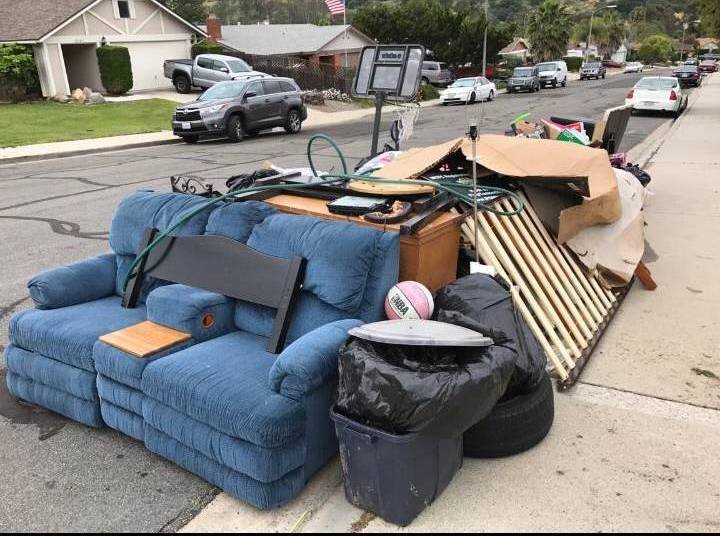Device Removal Atlanta: Quick and Safe Disposal Services
Device Removal Atlanta: Quick and Safe Disposal Services
Blog Article
Expert Waste Management Methods Tailored for Industrial Setup
Customizing waste monitoring approaches to suit the special requirements of industrial setups is not just beneficial but vital for preserving functional effectiveness and environmental sustainability. The pursuit for better waste monitoring in commercial setups includes a careful strategy that stabilizes governing conformity, cost-effectiveness, and eco-friendly duty.
Importance of Tailored Waste Management
Tailored waste monitoring techniques are essential in commercial setups to maximize source use and lessen ecological effect. Industrial operations generate a significant quantity of waste, varying from solid by-products to chemical pollutants, posing a hazard to the setting if not managed efficiently (Atlanta junk hauling). By tailoring waste monitoring techniques to suit the details requirements and obstacles of each industrial center, firms can not just follow policies but also enhance operational performance and sustainability
One trick aspect of tailored waste administration is performing a detailed waste analysis to determine the kinds and volumes of waste created. This evaluation allows business to execute targeted remedies such as recycling programs, waste partition protocols, and waste-to-energy efforts. By comprehending the composition of their waste streams, industrial centers can establish cost-efficient methods to reduce waste generation at the resource, resulting in long-term ecological advantages.

Kinds Of Industrial Waste
What are the different groups of commercial waste typically created in manufacturing processes? Industrial waste can be categorized right into a number of major classifications based upon its make-up and features. Hazardous waste is one of the most vital types, including chemicals, solvents, heavy metals, and other products that posture a threat to human wellness or the setting. This group frequently requires special delivery and disposal approaches to protect against contamination and make certain safety and security.
One more common sort of industrial waste is non-hazardous waste, which includes materials like paper, plastics, and product packaging waste. While non-hazardous waste might not present immediate threats, appropriate monitoring is still vital to lower garbage dump usage and advertise recycling and sustainability practices.

Hazardous Waste Handling Procedures
Efficient management of dangerous waste in industrial setups demands rigorous adherence to developed taking care of procedures to mitigate risks and ensure environmental security. Dangerous waste handling procedures include a number of crucial actions to reduce the prospective effect on human health and wellness and the atmosphere.
Secondly, once view identified, contaminated materials has to be thoroughly segregated from non-hazardous waste to stop contamination and make certain correct therapy. Storage space of dangerous waste need to abide by guidelines pertaining to control, labeling, and compatibility to stop leakages, spills, or other occurrences that might endanger employees or the setting.
Moreover, managing procedures need to consist of the usage of personal safety devices, worker training, and emergency feedback protocols. Regular inspections, surveillance, and paperwork of dangerous waste handling tasks are crucial to keeping compliance and recognizing locations for improvement. By adhering to these structured procedures vigilantly, commercial facilities can properly handle contaminated materials and copyright their you can try this out commitment to ecological stewardship.
Executing Reliable Recycling Practices

To implement effective reusing methods, commercial centers should first carry out a waste audit to identify the types and amounts of recyclable products created in their procedures. Based on this audit, companies can then develop marked recycling stations, offer proper training to staff members on proper sorting techniques, and collaborate with trusted recycling companions for the collection and handling of products. In addition, establishing specific reusing goals, tracking progress, and regularly interacting with personnel regarding the relevance of reusing are important steps to guarantee the success and sustainability of recycling efforts in industrial settings.
Tracking and Constant Enhancement
To make sure the performance and sustainability of waste management strategies in industrial settings, the implementation of durable surveillance and continual renovation processes is imperative. Monitoring entails monitoring crucial efficiency signs (KPIs) such as waste generation rates, recycling percentages, and disposal costs. Regularly analyzing these metrics permits services to determine areas for improvement and determine the success of executed waste management campaigns.
Constant improvement is essential for improving processes over time. It involves examining monitoring information, identifying inefficiencies, and carrying out modifications to maximize waste administration practices better. This iterative approach promotes a culture of continuous enhancement and advancement within the organization.
Utilizing innovation like waste monitoring software and sites IoT sensors can simplify keeping an eye on initiatives, providing real-time data for educated decision-making. Employee training and interaction likewise play a vital role in guaranteeing the success of surveillance and continuous improvement efforts, as frontline personnel are usually essential gamers in waste monitoring processes.
Final Thought
To conclude, customized waste monitoring strategies are important for commercial setups to successfully handle different kinds of waste, including dangerous products. By applying reliable reusing techniques and continuously tracking and enhancing waste administration processes, industries can reduce their environmental effect and guarantee compliance with guidelines. It is crucial for firms to focus on waste administration to shield the setting and advertise sustainability in their procedures.
Report this page